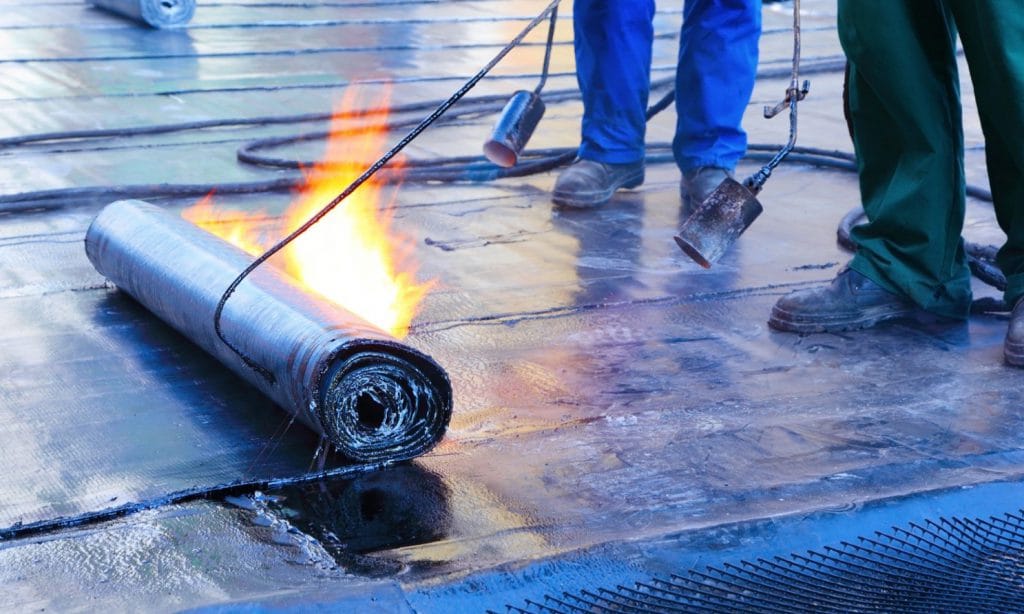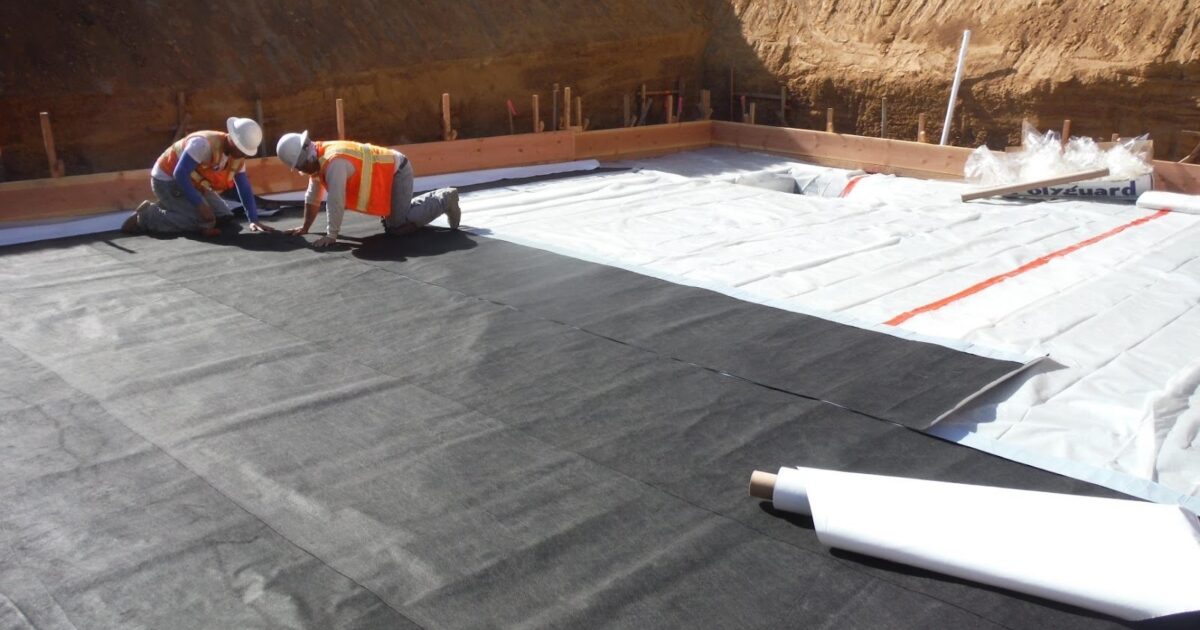Exactly How Waterproofing Functions: A Comprehensive Check Out Techniques and Technologies
Waterproofing is crucial for safeguarding structures from moisture-related damage. It involves different methods and modern technologies that develop barriers versus water intrusion. Traditional approaches, such as compacted clay, exist together with modern innovations like liquid-applied membranes. Understanding the nuances of these approaches is important for reliable application. The effectiveness of any waterproofing service pivots not just on the techniques made use of but additionally on continuous maintenance and assessment. What are the key factors that influence lasting efficiency?
Recognizing the Basics of Waterproofing
Waterproofing is an essential process that safeguards structures from water intrusion, which can result in considerable damage with time. This method includes the application of different products and methods developed to develop a barrier against dampness. The main goal is to stop water from permeating surface areas, which can trigger degeneration, mold and mildew development, and structural instability.Various factors influence the selection of waterproofing method, including the kind of structure, its location, and ecological problems. Recognizing the physics of water motion and the residential properties of different products is crucial in picking an efficient waterproofing solution.Effective waterproofing not just safeguards buildings however likewise boosts their long life and stability. Generally, it is incorporated into the design phase of building to ensure thorough security. As awareness of water-related issues expands, the significance of understanding waterproofing principles becomes progressively clear to designers, building contractors, and homeowner alike.
Typical Waterproofing Methods
Standard waterproofing methods have actually been used for centuries, counting on tried and true methods and products to protect structures from water damage. Among the earliest methods involves the usage of clay, which, when compacted, produces an all-natural obstacle versus moisture. In addition, bitumen, a sticky, black product originated from petroleum, has actually been utilized for its water-resistant properties, typically used to roof coverings and foundations.Another technique entails the application of lime-based plasters, which offer a breathable layer that enables wetness to leave while preventing water access. Thatch roof covering, a typical method still seen in some societies, provides superb waterproofing because of its securely packed straw layers.Moreover, making use of rock and block has projected, as these materials are inherently resistant to water when correctly set up. In general, standard waterproofing techniques highlight the importance of selecting suitable materials and building and construction practices to improve durability against water invasion.
Modern Waterproofing Technologies
Developments in modern waterproofing modern technologies have transformed the means structures are safeguarded from water damage. Cutting-edge strategies such as liquid-applied membranes and sophisticated sealers have actually improved the efficiency and versatility of waterproofing remedies. These modern technologies permit seamless application, decreasing the threat of leaks and making sure extensive insurance coverage over complicated surfaces.Moreover, the combination of wise innovations, such as wetness sensing units and automated tracking systems, allows real-time evaluation of waterproofing performance. This positive technique assists in timely maintenance and minimizes long-term repair service costs.Additionally, developments in spray-applied coverings use fast application and outstanding adhesion, adapting to various substrates while providing durable protection. Strategies like polymer-modified systems further boost adaptability and durability, making them ideal for diverse atmospheres. On the whole, modern waterproofing innovations not only alleviate water breach however likewise add to the long life and sustainability of structures, marking a considerable change in the sector.
Materials Used in Waterproofing
The performance of waterproofing solutions greatly counts on the materials utilized in their application. Different materials are utilized to create obstacles versus water ingress, each with special residential or commercial properties fit for different environments. Typically used materials include membranes, coverings, and sealants.Liquid-applied membranes, frequently made from polyurethane or acrylic, create a seamless obstacle that adapts to intricate surface areas. Sheet membrane layers, typically constructed from rubber or thermoplastic, deal toughness and are perfect for larger areas. Additionally, cementitious waterproofing products, made up of cementitious compounds, offer superb attachment and flexibility.Sealants made from silicone moisture resistant plywood or polyurethane are important for joints and seams, making sure thorough protection. Advanced materials, such as geo-composite membranes, combine several features, boosting efficiency. In general, the selection of waterproofing materials is essential in attaining long-lasting and efficient water resistance, tailored to particular project demands and ecological conditions.
Usual Applications of Waterproofing
Waterproofing plays a necessary function in various markets, making sure the longevity and honesty of frameworks. Usual applications consist of property services that shield homes, business infrastructure that safeguards businesses, and commercial setups that require robust protection versus wetness. Understanding these applications highlights the relevance of waterproofing in maintaining both security and performance throughout various atmospheres.
Residential Waterproofing Solutions
Numerous home owners encounter obstacles with dampness breach, making effective property waterproofing remedies crucial. Various methods exist to resolve this concern, including exterior and interior waterproofing systems. Inside services commonly include the application of sealers and coverings to cellar wall surfaces, which help prevent water seepage. Exterior approaches normally consist of the setup of water drainage systems and waterproof membranes that divert water far from the foundation.Additionally, homeowners may consider sump pumps to remove water build-up and dehumidifiers to manage moisture levels. Appropriate grading and making use of rain gutters likewise play a vital duty in taking care of water circulation around the home. By applying these approaches, property owners can considerably lower the danger of water damage and mold growth, ensuring a dry and risk-free living atmosphere.

Business Facilities Protection
Efficient waterproofing options play an essential function in the protection of commercial infrastructure. Drainage & waterproofing company Omaha. These methods are important for securing buildings, vehicle parking structures, and bridges from water damages, which can compromise architectural honesty and cause costly repairs. Usual applications include the installation of membranes, finishes, and sealers that develop barriers versus dampness infiltration. Areas such as cellars, roofing systems, and exterior wall surfaces are frequently prioritized to guarantee longevity and toughness. In addition, waterproofing systems can improve energy efficiency by avoiding water-related concerns that may lead to mold and mildew development and degeneration. By carrying out durable waterproofing steps, residential property proprietors can safeguard their financial investments and preserve operational efficiency, inevitably adding to the overall sustainability of industrial centers
Industrial Applications Summary
While various markets face unique obstacles, the requirement for reliable waterproofing services continues to be a continuous in industrial applications. Industries such as production, construction, and power commonly encounter settings where moisture direct exposure can jeopardize architectural integrity and functional efficiency. In manufacturing centers, waterproofing is important for safeguarding equipment and materials from water damage. In construction, it safeguards foundations and cellars against groundwater seepage. The power sector counts on waterproofing for the defense of tools in hydroelectric plants and offshore structures. Furthermore, food handling sectors use waterproofing to assure hygiene and conformity with safety requirements. Generally, effective waterproofing options are essential for boosting longevity, safety and security, and performance you can find out more across different commercial settings.
Upkeep and Longevity of Waterproofing Solutions
Although waterproofing remedies official site are created to use lasting defense against moisture intrusion, regular upkeep is necessary to guarantee their performance and longevity - Water Solutions. Regular evaluations play a significant role in determining potential problems such as fractures, peeling off, or signs of water damages. Addressing these issues quickly can protect against additional wear and tear and pricey repairs.Additionally, cleansing the surface of waterproof locations aids get rid of dust and debris that could endanger the stability of the waterproofing barrier. It's also recommended to reapply protective coatings or sealers as recommended by manufacturers to keep excellent efficiency. Ecological elements, such as UV direct exposure and extreme climate condition, can affect the life-span of waterproofing materials, making normal assessment important
Often Asked Questions
Can Waterproofing Be Applied in Cold Weather?
The concern of using waterproofing in winter increases issues regarding bond and treating. Many items might not execute at their ideal in low temperatures, demanding careful selection and consideration of certain guidelines for efficient application.
The Length Of Time Does Waterproofing Normally Last?
The period of waterproofing effectiveness differs based on materials and ecological factors. Typically, it can last from five to 10 years, yet normal maintenance and examinations are important to assure peak efficiency and longevity.
Is DIY Waterproofing Effective and Safe?
The effectiveness and security of DIY waterproofing depend on various variables, consisting of material high quality and application technique. While some individuals attain sufficient results, others might encounter issues that endanger long-lasting defense and structural integrity.
What Are the Signs of Failing Waterproofing?
Signs of falling short waterproofing include noticeable water discolorations, peeling off paint, mold and mildew development, mildewy smells, and dampness in wall surfaces or ceilings - Yard drainage Omaha. These indications suggest jeopardized obstacles, demanding timely examination and potential removal to stop additional damage
How Do I Pick the Right Waterproofing Contractor?
